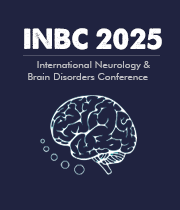Title : Uncommon presentation of spontaneous intracranial hypotension in an older adult: A case complicated by bilateral cerebral venous sinus thrombosis
Abstract:
Spontaneous intracranial hypotension (SIH) is a rare condition caused by reduced cerebrospinal fluid (CSF) pressure, often secondary to spontaneous CSF leaks. Although classically presenting with orthostatic headaches, SIH can have atypical manifestations, making diagnosis challenging.
We present a case of SIH in a woman in her early 70s who reported chronic frontal headaches, intermittent imbalance, and brief episodes of hand weakness. Initial evaluation suggested sinusitis; however, CT imaging revealed hyper density in the superior sagittal sinus and cortical veins, and CT venography confirmed bilateral cerebral venous sinus thrombosis (CVST). She was started on Rivaroxaban.
During a subsequent admission for transient facial droop, MRI revealed bilateral subdural hygromas, particularly on the right. Additional tests, including carotid Doppler and EEG, were unremarkable. The presence of subdural collections and CVST, along with her imaging findings, raised suspicion of SIH. Though her Bern score was not fully met, a multidisciplinary review concluded SIH as the most likely diagnosis.
Her anticoagulation was switched to Warfarin. On follow-up, the patient remained asymptomatic, resumed daily activities, and imaging confirmed resolution of the CVST. This case demonstrates how SIH can present atypically in elderly patients and underscores the diagnostic value of imaging even when the Bern score is incomplete.
Importantly, it highlights that anticoagulation can be safely administered in patients with CVST and coexisting subdural hygromas, provided haemorrhage has been excluded via imaging. This case also emphasizes the need for early involvement of multidisciplinary teams and suggests that SIH should be considered in patients with bilateral CVST or subdural collections, particularly when no clear risk factors are present.
In conclusion, SIH remains a diagnostic challenge, but early recognition of SIH and its complications, can significantly impact patient outcomes through targeted investigation and safe, effective treatment.



